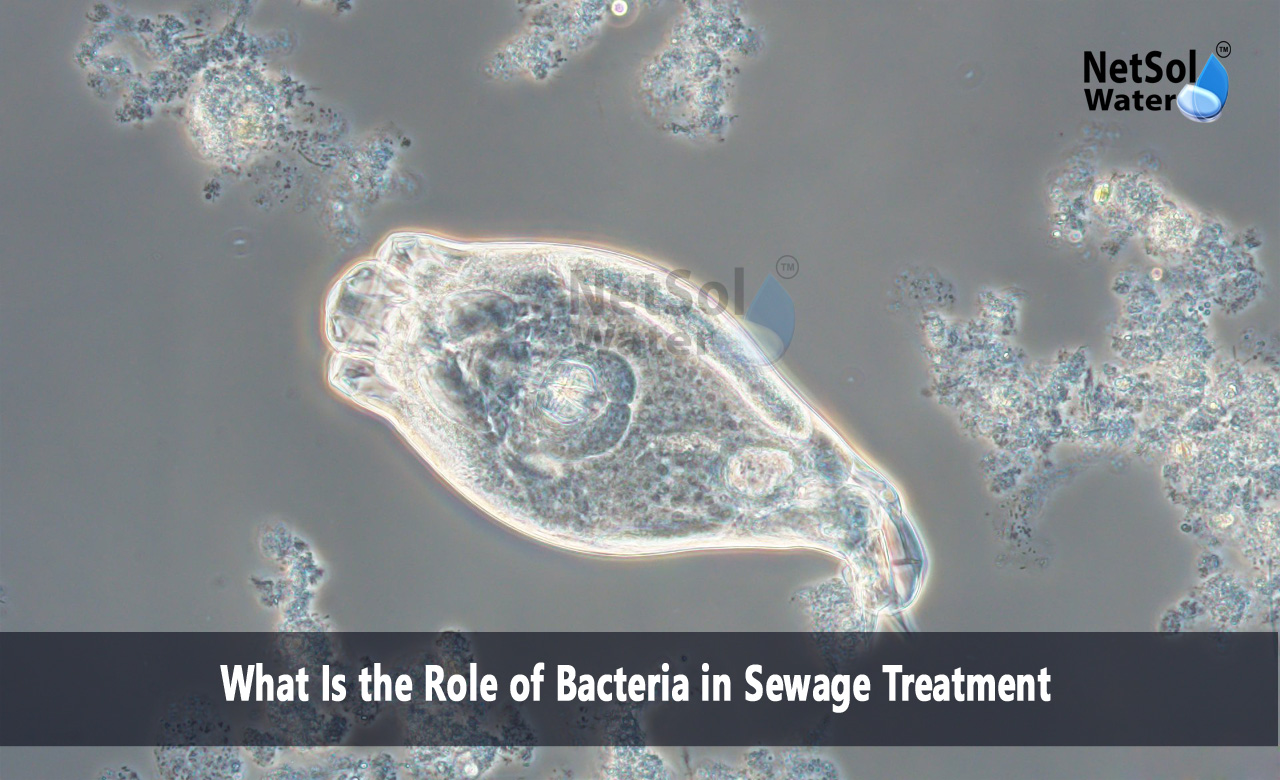What Is the Role of Bacteria in Sewage Treatment?
Sewage treatment plays a major role in protecting public health and the environment. It turns wastewater into water that is safe to return to rivers and seas. In this process bacteria take centre stage. Netsol Water stands out as a leading sewage treatment plant manufacturer. The company has designed efficient systems that use bacteria to break down waste.
Bacteria work in tanks and reactors to digest organic matter. They convert harmful compounds into harmless gases and solids. These microbes drive each step of treatment. They transform waste into clear water that meets strict quality rules. By using natural biological processes, the systems cut energy use and avoid harsh chemicals.
We will explore the role of bacteria in sewage treatment. We will see how different methods use microbes to clean water
Biological Treatment Overview
Biological treatment forms the core of sewage treatment plants. In this step bacteria digest organic pollutants and turn them into biomass and gases. Let us have a look at some of the basic features and steps that define this process.
Microbial Digestion
Microbes feed on waste compounds and reduce pollutant levels. They break down complex molecules into simpler ones. This reaction releases energy and builds microbial cells. The tank environment keeps bacteria active and growing.
Oxygen Supply
Most bacteria need oxygen to work. Treatment plants use air blowers to add air into the tanks. This air keeps the microbes busy and speeds up digestion. The system balances airflow and mixing to reach high treatment rates.
Sludge Removal
After bacteria finish their work they form sludge. The plant removes this sludge by settling it in a separate tank. The clear water at the top flows onward for final polishing. The settled microbes return to the digestion tank to treat more waste.
Activated Sludge Process
The activated sludge process offers a flexible way to treat sewage. It relies on a high density of bacteria in mixed tanks. Let us have a look at some of the key parts that make this process effective.
Aeration Tank Operation
In an aeration tank plants blend sewage with returned sludge. High air supply keeps bacteria floating. This mix allows microbes to access waste and break it down fast.
Secondary Clarifier
After aeration the water flows into a clarifier. Here bacteria settle to the tank bottom. The plant returns most of this sludge back to the aeration tank. A small portion leaves as excess sludge.
Control of Sludge Age
Operators control how long microbes stay in the system. This measure affects removal rates and system stability. By adjusting sludge age the plant can adapt to changes in flow or waste load.
Biofilm Systems
Biofilm systems use bacteria that attach to surfaces. These setups need less space and handle high loads well. Let us have a look at some of the main elements that drive biofilm reactors.
Trickling Filters
Trickling filters feature a bed of rock or plastic where bacteria cling. Sewage trickles over the bed. Bacteria digest waste as the liquid passes. The treated water drains to a tank for settling.
Moving Bed Reactors
In moving bed reactors the system fills with floating carriers. Bacteria grow on these carriers. The tank stirs the carriers so they collide and mix. This action spreads microbes and ensures contact with waste.
Media Cleaning
Over time biofilm grows thick and blocks flow. The plant cleans the media by backwashing or shaking it. This step restores free flow and maintains treatment rates.
Anaerobic Digestion
Anaerobic digestion breaks down organic matter without oxygen. It produces biogas that plants can use to generate power. Let us have a look at some of the core stages in this process.
Hydrolysis and Acidogenesis
First, bacteria convert large molecules into sugars and acids. This step opens the complex compounds and makes them ready for other microbes.
Methanogenesis
Methane producing bacteria then turn acids into methane and carbon dioxide. This step yields biogas that contains usable energy. The plant can burn this gas to heat digesters or to run generators.
Digestate Handling
After digestion the leftover solids go through dewatering. The result is a dry cake that plants can use as fertilizer or send to a landfill. This step closes the loop on waste management.
Conclusion
Throughout every stage the role of bacteria in sewage treatment remains clear. These microbes drive key reactions that turn waste into clean water and biogas. Netsol Water leads the way in providing reliable treatment systems. The company draws on deep expertise to build plants that harness bacterial power. If you want to learn more about the role of bacteria in sewage treatment, contact Netsol Water today. Request a consultation and see how their solutions can meet your water treatment needs.
Contact Netsol Water at:
Phone: +91-9650608473, Email: enquiry@netsolwater.com



